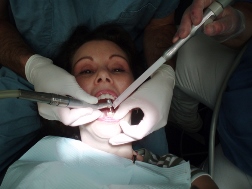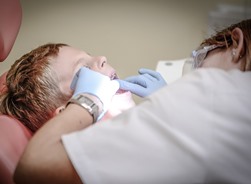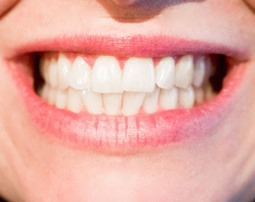How to Pick a Dental Hygienist Training Program near Roaring Spring Pennsylvania
 Choosing the right dental hygienist college near Roaring Spring PA is an essential initial step toward starting your new career in dentistry. But before you can make your choice, you must examine and compare your school options. There is far more to doing your due diligence than selecting the school with the lowest tuition or enrolling in the program that is nearest to your home. There are other important issues to take into account as well, including the program’s accreditation and reputation. Dental hygienists typically earn an Associate Degree, as compared to a certificate usually earned by assistants, and can take anywhere from two to three years to finish. Obviously with the lengthier training of a hygienist comes more cost. We will cover all of these concerns and additional questions that you should be asking the dental hygienist colleges you are reviewing later in this article. But first, let’s look at the roles of dental hygienists and the training programs provided.
Choosing the right dental hygienist college near Roaring Spring PA is an essential initial step toward starting your new career in dentistry. But before you can make your choice, you must examine and compare your school options. There is far more to doing your due diligence than selecting the school with the lowest tuition or enrolling in the program that is nearest to your home. There are other important issues to take into account as well, including the program’s accreditation and reputation. Dental hygienists typically earn an Associate Degree, as compared to a certificate usually earned by assistants, and can take anywhere from two to three years to finish. Obviously with the lengthier training of a hygienist comes more cost. We will cover all of these concerns and additional questions that you should be asking the dental hygienist colleges you are reviewing later in this article. But first, let’s look at the roles of dental hygienists and the training programs provided.
[campusexplorer header_text=”Find Dental Hygienist Schools Near You!” aos=”75346615″ concentration=”2D77CE61″ tracking=”DENTHYG”]
The Job of a Dental Hygienist
 When contrasting the job of a dental assistant to that of a hygienist, the most significant difference is undoubtedly that the hygienist works more on their own. Dental assistants work with and in support of the Roaring Spring PA dentists and the practice. Hygienists, while also supporting the practice, work with the patients more on a one-to-one basis. They are frequently the first person a patient encounters when called from the waiting room. They examine each patient’s teeth and gums and present their results to the dentists. They also may perform basic procedures. Depending on state law, a hygienist’s duties may include:
When contrasting the job of a dental assistant to that of a hygienist, the most significant difference is undoubtedly that the hygienist works more on their own. Dental assistants work with and in support of the Roaring Spring PA dentists and the practice. Hygienists, while also supporting the practice, work with the patients more on a one-to-one basis. They are frequently the first person a patient encounters when called from the waiting room. They examine each patient’s teeth and gums and present their results to the dentists. They also may perform basic procedures. Depending on state law, a hygienist’s duties may include:
- Removing plaque, tartar and stains
- Administering fluoride treatments
- Polishing teeth and applying sealants
- Educating patients about oral hygiene
- Taking X-rays and developing film
- Removing sutures and applying fillings
To qualify for licensing in almost all states, dental hygienists must have graduated from a Commission on Dental Accreditation (CDA) accredited dental hygiene program. They must also pass the National Board Dental Hygiene Exam as well as any state licensure examinations. Once they have fulfilled these requirements they are regarded as fully licensed and may add the “RDH” designation to their names, signifying Registered Dental Hygienist.
Dental Hygienist Education Options
Because of the increased responsibility as compared to an assistant, dental hygienists employed in Roaring Spring PA dental offices are generally required to have an Associate Degree in dental hygiene rather than a certificate. These programs can require anywhere from 2 to as long as 3 years to finish and must be accredited by the CDA in nearly every state. They are offered in community colleges as well as trade and technical schools. And in addition to classroom studies learning the fundamentals of dental hygiene, there will be a practical aspect to the training as well| A number of programs also offer internships with local dentists or dental practices.
Online Dental Hygienist Classes
 Choosing an online dental hygienist program may be a good option for obtaining your training. Just keep in mind that the classes will not be totally online, since there will be a clinical portion to your training. But the balance of your classes will be provided via your desktop computer in the convenience of your Roaring Spring PA home or anywhere else on your tablet or laptop. For those continuing to work while going to school, online dental classes make education much more obtainable. Many may even charge lower tuition costs than their traditional counterparts. And additional expenses such as for books, school supplies and commuting may be reduced also. The clinical training can often be performed at a community dental office or in an on-campus lab. With both the online and clinical training, everything required to receive the proper education is provided. If you have the dedication for this style of education, you might find that attending an dental hygienist online college is the best option for you.
Choosing an online dental hygienist program may be a good option for obtaining your training. Just keep in mind that the classes will not be totally online, since there will be a clinical portion to your training. But the balance of your classes will be provided via your desktop computer in the convenience of your Roaring Spring PA home or anywhere else on your tablet or laptop. For those continuing to work while going to school, online dental classes make education much more obtainable. Many may even charge lower tuition costs than their traditional counterparts. And additional expenses such as for books, school supplies and commuting may be reduced also. The clinical training can often be performed at a community dental office or in an on-campus lab. With both the online and clinical training, everything required to receive the proper education is provided. If you have the dedication for this style of education, you might find that attending an dental hygienist online college is the best option for you.
Issues to Ask Dental Hygienist Colleges
 Now that you have decided to become a dental hygienist in Roaring Spring PA, you can start the process of comparing programs and schools. As we covered at the beginning of this article, a number of students begin by checking out the cost and the location of the schools. Perhaps they search for several online options as well. Even though these may be important initial points to consider, there are a few additional questions that you need to address to the schools you are comparing in order to make an informed decision. Toward that end, we have supplied a list of questions to help you with your evaluation and ultimate selection of the ideal dental hygienist college for you.
Now that you have decided to become a dental hygienist in Roaring Spring PA, you can start the process of comparing programs and schools. As we covered at the beginning of this article, a number of students begin by checking out the cost and the location of the schools. Perhaps they search for several online options as well. Even though these may be important initial points to consider, there are a few additional questions that you need to address to the schools you are comparing in order to make an informed decision. Toward that end, we have supplied a list of questions to help you with your evaluation and ultimate selection of the ideal dental hygienist college for you.
Is the Dental Program Accredited? There are several good reasons why you should only choose an accredited dental hygienist college. If you are planning to become licensed or certified, then accreditation is a condition in almost all states. To qualify to take the National Board Dental Hygiene Examination, your dental school must be accredited by the Commission on Dental Accreditation (CDA). Accreditation also helps ensure that the training you get is of the highest quality and comprehensive. Roaring Spring PA employers often prefer or require that job applicants are graduates of accredited schools. And finally, if you are requesting a student loan or financial aid, usually they are not obtainable for non-accredited programs.
Is Sufficient Clinical Training Included? Clinical or practical training is a vital part of any dental training program. This is true for the online school options as well. Most dental hygienist schools have relationships with area dental offices and clinics that furnish clinical training for their students. It’s not only imperative that the college you choose provides enough clinical hours but also provides them in the type of practice that you ultimately want to work in. For example, if you have an interest in a career in pediatric dentistry, verify that the school you choose offers clinical rotation in a local Roaring Spring PA dental practice that specializes in dental services for children.
Are Internships Available? Verify if the dental programs you are evaluating sponsor internship programs. Internships are probably the ideal means to obtain hands-on, practical experience in a real dental practice. They help students to transition from the theoretical to the practical. They can also help students establish professional relationships in the Roaring Spring PA dentistry community. And they are attractive on resumes also.
Is Job Placement Support Provided? Many students that have graduated from dental hygienist schools require assistance landing their first job. Check if the programs you are researching have job placement programs, and what their job placement rates are. Schools with higher job placement rates probably have excellent reputations within the Roaring Spring PA dental community as well as large networks of contacts where they can place their students for internships or employment.
Are Classes Small? Check with the programs you are interested in how big typically their classes are. The smaller classes generally provide a more intimate environment for learning where students have greater access to the instructors. On the other hand, large classes can be impersonal and provide little individualized instruction. If practical, find out if you can monitor a couple of classes at the Roaring Spring PA dental hygienist school that you are leaning toward in order to experience first hand the degree of interaction between instructors and students before making a commitment.
What is the Overall Expense of the Program? Dental hygiene schools can fluctuate in cost dependent on the length of the program and the volume of practical training provided. Other variables, for example the reputations of the schools and whether they are public or private also have an impact. But besides the tuition there are other substantial costs which can add up. They can include costs for such things as commuting and textbooks as well as school materials, equipment and supplies. So when examining the cost of programs, don’t forget to add all of the expenses associated with your education. Most colleges have financial assistance departments, so be sure to ask what is offered as far as grants, loans and scholarships in the Roaring Spring PA area.
Are the Classes Convenient? Before selecting a dental hygienist school, you must make sure that the hygienist or assistant program offers classes that suit your schedule. This is especially true if you continue working while getting your education and need to go to classes near Roaring Spring PA in the evenings or on weekends. And even if you select an online school, you will still be required to schedule your practical training classes. Also, while making your inquiries, ask what the make-up protocol is if you should have to miss any classes due to illness, work or family issues.
Attending Dental Hygienist School near Roaring Spring PA?
Roaring Spring, Pennsylvania
Roaring Spring was established around the Big Spring in Morrison's Cove, a clean and dependable water source vital to the operation of a paper mill. Prior to 1866, when the first paper mill was built, Roaring Spring had been a grist mill hamlet with a country store at the intersection of two rural roads that lead to the mill near the spring. A grist mill, powered by the spring water, had operated at that location since at least the 1760s. After 1867, as the paper mill expanded, surrounding tracts of land were acquired to accommodate housing development for new workers. The formalization of a town plan, however, never occurred. As a result, the seemingly random street pattern of the historic district is the product of hilly topography, a small network of pre-existing country roads that converged near the Big Spring, and the property lines of adjacent tracts that were acquired through the years for community expansion. The arterial streets of the district are now East Main, West Main, Spang and Bloomfield, each of which leads out of the borough to surrounding townships. Two of these streets — Spang and East Main — meet with Church Street at the district's main intersection called "Five Points." The boundaries of the district essentially include those portions of Roaring Spring Borough which had been laid out for development by the early 1920s. This area encompasses 233 acres (0.94 km2) or 55 percent of the borough's area of 421 acres (1.70 km2). Since the district's period of significance extends to 1944, most of those buildings erected after the 1920s were built as infill within the areas already subdivided by the 1920s. In the early 1960s, the Borough began to annex sections of adjacent Taylor Township, especially to the east around the then new Rt. 36 Bypass.
Daniel Mathias (D. M.) Bare laid out Roaring Spring's first 50 building lots in 1865 after he and two partners decided to locate the region's first paper mill near the spring.[3] These lots were located within and around the so-called village "triangle" defined by West Main, Spang, and East Main Streets. By 1873, the borough contained about 170 lots and 50 buildings, which included the paper and grist mills, three churches, a company store, a schoolhouse, and one hotel. The population stood at about 100. The triangle remained the industrial, commercial and retailing core of the town until 1957 when the bypass of Main Street, PA Rt. 36, was built to the east of town through Taylor Township. As is true of many American small towns, many village merchants along with new businesses have since relocated to the new highway. The village core retains only a few shops and professional offices, but still holds the Roaring Spring Blank Book Company and Roaring Spring Water Bottling Company, all of the historic church buildings, the public library(formerly the Eldon Inn), the borough building, the post office(earlier moved from farther up East Main St.). The elementary school (former junior-senior high school)was demolished in 2010.
The Roaring Spring Historic District is located within the Borough of Roaring Spring, a paper-mill town of about 2,600 established in the late 1860s in southern Blair County, south-central Pennsylvania.[1] Roaring Spring is situated within the northwest quadrant of a long bowl-like valley known as Morrisons Cove, one of dozens of long but broad valleys in Pennsylvania's Ridge and Valley region. The town developed just southeast of a natural pass into the valley called McKee's Gap where an important iron smelting business (Martha Furnace) operated through the mid 19th century. The site of Roaring Spring is moderately hilly, drained by Cabbage and Halter Creeks. The most prominent natural feature is the Big Spring, or Roaring Spring, a large natural limestone spring so-called because of the great noise its eight-million-gallon-a-day stream once made rushing out of the hillside near the village center.[2] Roaring Spring is overwhelmingly residential (91 percent) in scale, but also includes churches, stops, professional offices, a municipal building, parks, a cemetery, a book factory complex, and a former railroad station. Most houses are two-story, wood-frame single-family buildings situated on lots of 1⁄5 acre (810 m2) to 1⁄7 acre (580 m2). The largest segment of the building stock between 1865 and 1944 was constructed between the 1890s and 1930s. Architecturally, the district contains a variety of late 19th to early 20th century styles and vernacular building types, including Gothic Revival, Queen Anne, Colonial Revival, Bungalow, Foursquare, Gable Fronts, Gable Fronts & Wings, I Houses, and double-pile Georgian types. Ninety (90) percent of the district's 643 properties is rated as contributing. The remaining 10 percent consists of buildings less than 50 years old (constructed after 1944) or older buildings whose architectural integrity has been lost through inappropriate alterations. Overall, most alterations, such as inappropriate replacement of windows, doors and porch posts, are reversible if desired.[4]
Roaring Spring was established around the Big Spring, a clean and dependable water source vital to the operation of a paper mill. Prior to 1866, when the first paper mill was built, Roaring Spring had been a grist-mill hamlet with a country store at the intersection of two rural roads that lead to the mill near the spring. A grist mill, which was powered by the spring water, had operated at that location since at least the 1760s. After 1867, as the paper mill expanded, surrounding tracts of land were acquired to accommodate housing development for new workers. The formalization of a town plan, however, never occurred. As a result, the seemingly random street pattern of the historic district is the product of hilly topography, a small network of pre-existing country roads that converged near the Big Spring, and the property lines of adjacent tracts that were acquired through the years for community expansion. The arterial streets of the district are now East Main, West Main, Spang and Bloomfield, each of which leads out of the borough to surrounding townships. Two of these streets — Spang and East Main — meet with Church Street at the district's main intersection called "The Five Points." The boundaries of the district essentially include those portions of Roaring Spring Borough which had been laid out for development by the early 1920s. This area encompasses 233 acres (0.94 km2) or 55 percent of the borough's area of 421 acres (1,700,000 m2). Since the district's period of significance extends to 1944, most of those buildings erected after the 1920s were built as infill within the areas already subdivided by the 1920s. In the early 1960s, the Borough began to annex sections of adjacent Taylor Township, especially to the east around the then new Rt. 36 Bypass.[4]
Select the Ideal Dental Hygienist College near Roaring Spring PA
Selecting the right dental hygienist course is important if you want to take the National Board Dental Hygiene examination or, if required in your state, become licensed. As we have covered, there are several alternatives available to obtain your education and it takes a relatively short amount of time to become a dental hygienist. You can acquire your formal training through dental programs at community colleges, trade schools, vocational schools and technical institutes. Graduates of these programs usually obtain an Associate Degree. Dental Hygienists generally require about two years of studies prior to entering the job market. When obtaining a degree you can elect to attend classes online or on-campus. Whichever mode of training you elect to pursue, by asking the questions provided in this article you will be in a better position to make the best choice. And by doing so, you will be ready to start your journey toward becoming a dental hygienist in Roaring Spring PA.
More Great Cities in Pennsylvania
Business Results 1 - 10 of 1

